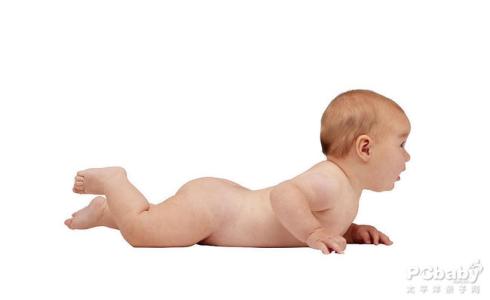摘要:无论在纽约或西雅图亦或是萨克拉门托市的街头,随便你问哪个路人,人一天应该走多少步路才达到足够的锻炼量,他们很可能都会告诉你说一万步。然而日行一万步真的有益健康吗?下面一起来看看吧。
If you pluck someone off the street, whether in New York or Seattle or Sacramento, and ask them how many steps people should aim for per day in order to get enough physical activity, they’ll probably tell you 10,000.
无论在纽约或西雅图亦或是萨克拉门托市的街头,随便你问哪个路人,人一天应该走多少步路才达到足够的锻炼量,他们很可能都会告诉你说一万步。
But is there any medical reason to embrace this number? Not really. That’s because the 10,000-steps-a-day recommendation has nothing to do with sedentary, fast-food-drenched circa-2015 America. Rather, the recommendation first popped up in a very different food and environment: 1960s Japan.
然而,这一数字背后有任何医学依据吗?其实不然。一天走一万步的这一建议与当下久坐不动,爱好快餐的美国人毫无关系。实则这一建议一开始是由饮食与环境都相当不同的日本于20世纪60年代提出的。
“It basically started around the Tokyo Olympics” in 1964, said Catrine Tudor-Locke, a professor who studies walking behavior at LSU’s Pennington Biomedical Center. “A company over there created a man-po-kei, a pedometer. And man stands for ‘10,000,’ po stands for ‘step,’and kei stands for ‘meter’or ‘gauge.’”Whatever the reason for the adoption of this particular number, “It resonated with people at the time, and they went man-po-kei-ing all over the place,”said Tudor-Locke.

“大约是在1964年东京奥运会前后,日本一公司设计出了一款计步器步,名为‘man-po-kei’,翻译过来就是‘10000步仪表’”,美国路易斯安那州巴吞鲁日潘宁顿生物医学研究中心步行行为实验室的负责人卡特里内·图多尔·洛克这样说道。无论这一数字背后的来由是什么,图多尔·洛克说,“该计步器在日本很受欢迎,人们去哪儿都穿戴着它。”
The problem, which barely needs stating, is that circa-1964 Japan was markedly different from the circa-2015 U.S. Data from the Food and Agriculture Organization of the United Nations shows that the average per-capita food supply for Japanese people in 1964 was 2,632 calories, while the average for Americans in 2011 was 3,639. That’s a difference of about 1,000 calories —or, about 20,000 steps for an average-size person.
问题显而易见,20世纪60年代的日本和如今的美国之间有很大的区别。根据联合国粮食农业组织提供的数据显示,1964年日本人均食品供应量为2,632卡路里,而2011年美国的该数据为3,639卡路里。这里就差了将近有1,000卡路里,为一般人行走两万步路消耗的热量。
More broadly, 10,000 steps is just a bit too simplistic a figure, say nutrition researchers. All the ones I spoke to agreed that there’s nothing wrong with shooting for 10,000 steps, per se, and that walking more is better than walking less. But Tudor-Locke said that “The one-size-fits-all [approach] doesn’t necessarily work.”
更广泛地说来,一万步这一数字设置地有点儿过于简单,营养观察员如是说。我所交流过的人都认为每天行走一万步本质上并没什么错,走的多总好过走的少。但是图多尔·洛克认为,这一方法并不适用于所有人。
Her work focuses on the most sedentary slice of the population, and there, it can be a challenge to get people to take 5,000 steps, let alone 10,000. But moving from 2,500 steps a day, say, to 5,000, is a small but important victory for people who don’t get any exercise, and can have important healthramifications. A big European study published in January that looked at the mortality rates for people with different activities levels, in fact, found that “a markedly reduced hazard was observed between those categorized as inactive and those categorized as moderately inactive”—a 20 to 30 percent reduction.
图多尔·洛克的研究对象是美国最不经常运动的人群。对于这一部分人来说,日行5,000步已是挑战,更别提10,000步了。但对于不运动的人来说,从每天2,500步跨越到5,000步已经算是不错的成果了,同时还有益健康。一月发布的某大型欧洲研究对不同运动水平的人群死亡率进行了调查。该研究发现,有一定运动量的人群死亡率要比没有运动量的人群死亡率低20%到30%。
“Focusing exclusively on how many steps you’re getting and neglecting those other aspects isn’t going to lead to an overall improvement in health, unless you’re addressing those other factors simultaneously,” said Jeff Goldsmith, a biostatistics professor at Columbia’s Mailman School of Public Health.
然而,哥伦比亚大学梅尔曼公共卫生学院生物统计学教授杰夫·戈德史密斯指出,只关注日行多少步而忽略饮食等其它因素是无法总体上提高健康水平的,除非同时考虑到其它这些因素。
Maybe it’s time, given just how unhealthy so many people are and how much they’d benefit from moving around just a little more, to embrace an incremental-improvement approach to exercise. “Stand rather than sit, walk rather than stand, jog rather than walk, and run rather than jog,”wrote Ulf Ekelund, lead author of the European mortality study, in an email. Tudor-Locke distilled things even further: “Just move more than before,”she said.
想到人们现在有多不健康以及锻炼给人们带来的好处,人们是时候应该增加锻炼了。研究欧洲病死率的研究员伍尔夫·艾克德隆表示,人们应该能站着就不坐着,能走不就站着,能慢跑就不要走路,能跑步就不要慢跑。图多尔·洛克进一步总结道:“只要比以前动得多就行。”
 爱华网
爱华网



